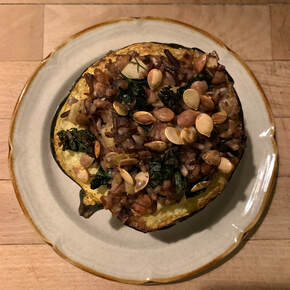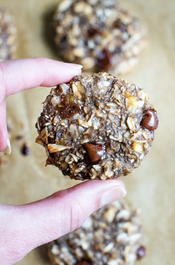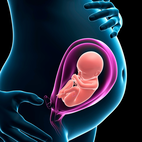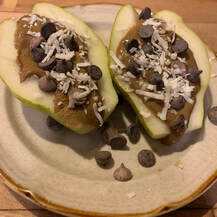- Home
-
All Products
- eGift Card
- Sleep Balm
- CBD Sleep Balm
- Recovery Balm
- CBD Recovery Balm
- Immunity Balm
- Little Buffalo Balm
- Simply Balm
- Heart & Soul Duo
- Magnesium Salt Soaks (1.85 oz)
- Magnesium Salt Soak (8 oz)
- Magnesium Salt Soak Bundle
- Self Care Candle Gift Set: Calming
- Self Care Candle Gift Set: Soul Warming
- Sleepy Buffalo Gift Set (2-Pack)
- The Gift of Wellness Set (3-Pack)
- The Gift of Wellness Set (2-Pack)
- Craft Your Own Gift Set (3-Pack)
- ADD ON: Extra Burlap Gift Bag
- Find in Store & Events
- Testimonials
- Contact
- Buffalo Beauts Partnership
- Blog
 This may sound strange, but we want you to take a moment and Google “heart disease” and “hard water.” Go ahead! Then, take a moment and scroll through the articles that come up. (And, no, obviously not everything on Google is reliable. But you should be seeing some scientific journal articles come up pretty high on the list…) What could hard water possibly have to do with heart disease? Minerals. In particular, high levels of calcium and magnesium. And many studies have found a correlation between harder water and lower levels of cardiovascular disease in communities. If you want to read more about this, Dr. Mildred Seelig and Dr. Andrea Rosanoff explain it in greater depth in the first few pages of The Magnesium Factor (2003, p. 7-10). Why does having more minerals in your water matter for your cardiovascular health? According to Seelig and Rosanoff (2003), “Heart muscle, when healthy, contains even more magnesium than other muscles do. And when magnesium levels become low, they can drop more in heart muscle cells than in other muscles [...] Blood vessel muscle cells need healthy amounts of magnesium to relax properly after each contraction. They can become stiff and inflexible if their magnesium gets too low” (p. 10). This happens especially if calcium (which tenses or stiffens muscles) is very high, perhaps through supplementation, and is not balanced out by high magnesium. In Transdermal Magnesium Therapy (2011), Dr. Mark Sircus even goes so far as to say that “If you are interested in heart health you have no choice but to be interested in magnesium” (p. 29). He claims that, if magnesium in the heart muscle drops too much, it can cause rhythm disorders or even spasms and cramps (p. 30). In other words, it can cause angina and even heart attacks. (For more details about how calcium and magnesium interact in heart muscle, check out this article entitled “Magnesium and Heart Disease: What’s the Link?” by Juliann Schaeffer. Schaeffer cites Seelig and Rosanoff, as well as sharing Dr. Carolyn Dean’s proposal that maintaining high levels of magnesium may actually be more important than being completely focused on cholesterol as is so common in cardiovascular medicine today.) Magnesium deficiency is also an issue in diabetes and insulin resistance - we will cover that in another newsletter because there is so much information to include! Does this mean that you can switch from taking your heart medication to taking magnesium? Definitely not - you’ll want to continue any current medications and talk to your doctor about adding magnesium - but it may be able to help! Are there any situations where magnesium is not appropriate to take? It may not be the right choice for you if you have very low blood pressure already or have a kidney condition. Also, it could be a problem for those taking blood thinners like Coumadin or Warfarin. In general, we always advise talking to your doctor about the magnesium (and the essential oils in our balms) if you are on medication!
0 Comments
 This recipe is a delicious and satisfying way to use local harvest vegetables that are in season right now. Choose acorn, delicata, or butternut squash - use any squash that looks good in the grocery store or your CSA box! The recipe includes wild rice, kale, and walnuts (which are all high in magnesium and other minerals), and don't forget to save and roast those squash seeds to put on top - squash and pumpkin seeds are some of the most magnesium rich foods you can eat! Serves 4 Ingredients:
Preheat oven to 400 degrees. Start cooking wild rice according to package directions - it will take longer than white or brown rice, usually about 45 minutes after bringing it to a boil! Brush the insides of the squash with 2 tblsp olive oil or butter and sprinkle with ½ tsp of the sage as well as salt and pepper. Place squash cut side up on tinfoil lined cookie sheet and roast for 45-50 minutes (or until fork tender). While squash is roasting, line a small cookie sheet with tinfoil. Toss squash seeds with 1 tsp olive oil and spread them on the cookie sheet in a single layer. Sprinkle with sea salt and roast on separate rack in 400 degree oven for 8 minutes or until lightly toasted. Heat the other 2 tblsp olive oil or butter in a large skillet over medium-high heat. Add chopped onion and cook for 2-3 minutes until translucent. Add chopped mushrooms and cook 3-5 minutes until they start to brown. Add sausage and cook until browned as well. Add apple and walnuts and cook until apple starts to soften. Add kale and cook until wilted. When wild rice is done cooking, add it to skillet and stir to combine with the rest of the stuffing ingredients. Season stuffing with the other ½ tsp of sage, ½ tsp thyme, and salt and pepper to taste. (If you are using fresh herbs, you may find that you need more.) Scoop filling from skillet into acorn squash halves and return to oven for 10-15 minutes until it starts to brown on top. Sprinkle with roasted squash seeds and serve! You will likely have extra filling. It can be eaten on its own as leftovers the next day or frozen to use for a quick stuffed squash dinner in the future! Because so much support is needed during pregnancy, birth, and the postpartum period, we wanted to highlight an organization that is working to provide this support for young women (particularly those who have been in the foster care system) who are pregnant or parenting. According to the Homespace website,
“For the past 20 years, Homespace Corporation has been successfully helping young, single women (age 14-21 years old) to forge a better life for themselves and their children. Homespace provides a safe, nurturing environment where these young women can learn the skills to enhance themselves and their families, and break the cycle of public welfare dependency. Residents receive training in job-readiness, budgeting, household management, nutrition, parenting, as well as comprehensive clinical services.” These clinical services even include access to doula care (see our post on local doulas for more info on this topic) as well as services like counseling to support mental and emotional health. We are donating a percentage of our September website sales to Homespace to support the young parents in this program!  Have you ever considered hiring a doula for birth support? In the wellness community, we interact pretty regularly with doulas and others offering birth support, so we want to highlight the incredibly important work they are doing! What is a doula? A doula is someone who is not a medical practitioner (i.e. not a doctor, nurse, or midwife) but who is a trained and certified professional and a valuable part of your birth team and can offer a wealth of support for you and your partner in what YOU want both during pregnancy, birth, and during the postpartum period. A doula can provide education to help you make informed decisions regarding your birth plan, and advocate for and empower you in your choices. This may include helping you find the most comfortable movement and positions during labor, helping your partner in supporting you, providing help with post-birth recovery (physical and emotional), assisting with baby-related tasks, or perhaps even making food for you or helping you find healthy and practical food solutions when you bring your baby home. A doula may also offer coaching on helping your baby sleep. Basically, a doula is someone who can respond to your individual needs to help you have the most positive possible birth and postpartum experience. In terms of the research behind doula support, thank you to the wonderful Colleen Young and Patricia Conner of local business The Doula’s Daughter for highlighting the following study on their website: According to the study “Continuous support for women during childbirth” (Bohren, Hofmeyr, Sakala, Fukuzawa & Cuthbert, 2017), “Continuous support during labour may improve outcomes for women and infants, including increased spontaneous vaginal birth, shorter duration of labour, and decreased caesarean birth, instrumental vaginal birth, use of any analgesia, use of regional analgesia, low five‐minute Apgar score and negative feelings about childbirth experiences.” In other words, having a doula can help you to have healthier and safer birth outcomes in a variety of ways! And because we know that Black women in particular have significantly higher maternal mortality (as well as infant mortality) rates in the United States, access to doulas and higher quality medical care and patient advocacy before, during, and after birth is particularly crucial. Read more in Linda Villarosa’s New York Times article “Why America’s Black Mothers and Babies Are in a Life-or-Death Crisis” (2018) to learn about how a combination of toxic stress (Geronimus’ “weathering hypothesis” explains negative health outcomes as a result of living in a culture of discrimination and socioeconomic inequality) and a dismissal of symptoms by medical professionals creates greater risk for Black women and their babies. If you are looking for local birth support for yourself, a partner, a family member, or a friend, here is a list of the doulas, birth centers, and other resources we have come to be aware of in the community:
 Photo from https://www.eatingbirdfood.com/ Photo from https://www.eatingbirdfood.com/ Maybe you’re a new parent without a lot of time or energy. Or maybe you’re going to visit a friend or family member who has just had a baby, and you want to bring something that will be helpful. How about some Oatmeal Chia Cookies? The recipe for these cookies comes from Brittany Mullins’ blog, Eating Bird Food. They are full of magnesium-rich and nutrient-dense ingredients like chia seeds, almond milk, almond butter, oats, dates, and dark chocolate chips, all of which can help give new parents the energy they need as they navigate physical and emotional changes, find new routines, and work through the anxieties of caring for a baby. Also, the oats are a great ingredient for helping with lactation! (Brittany’s blog even has a recipe for Healthy Lactation Cookies and Lactation Bites if you are looking specifically for help with healthy breastfeeding!) But these oatmeal chia breakfast cookies are great for a quick healthy and yummy breakfast that can be made ahead of time and grabbed on the fly to eat during a nursing or pumping session or just a midday snack whenever there’s a free moment! Click the link above to go to the recipe!  At our markets and on email and social media, we get a LOT of questions about magnesium and pregnancy! Most of the time, people are looking to alleviate those painful pregnancy leg cramps for themselves or someone they know. (And, yes, magnesium can definitely help with that, just like it can help with restless legs or other muscle cramps!) However, there are several other reasons to use magnesium during pregnancy. One of them is that the body’s mineral needs change during pregnancy. In Transdermal Magnesium Therapy (2011), Dr. Mark Sircus writes that “During pregnancy the body needs more minerals and estrogen takes care of the higher absorption” (p. 139). He also writes that In all likelihood pregnancy cannot be normal unless magnesium levels are adequate. The concentration of magnesium in the placental and fetal tissues increases during pregnancy. The requirements for this element in a pregnant woman’s organism generally exceed its supply; hence, pregnancy should be considered a condition of ‘physiological hypomagnesemia’ [...] During pregnancy, magnesium helps build and repair body tissue in both mother and fetus. A severe deficiency during pregnancy may lead to preeclampsia, birth defects, and infant mortality. Magnesium relaxes muscles and research suggests that proper levels of magnesium during pregnancy can help keep the uterus from contracting until week 35 (p. 236-237). If people's magnesium levels are inadequate and they go into labor early, hospitals will often use intravenous magnesium sulfate to stop labor. For those for whom a caesarian section is necessary, it is important to know that supplementing with magnesium can be helpful in the weeks before the surgery (if the C-section is planned) and the weeks following, as any surgery places a great deal of stress on the body and can deplete magnesium stores. Sircus claims that “Surgeons need to become familiar with the transdermal approach for then they can start their patients off with heavy application weeks before surgery and for weeks after since this method of application can easily be done at home by the patients” (2011, p. 127). And, finally, for those who are trying to become pregnant, it is important to know that “Magnesium is needed for reproductive fertility and the use of pharmaceutical contraceptives is known to diminish magnesium stores in our body” (Sircus, 2011, p. 239). In other words, if you are planning to stop taking pharmaceutical contraceptives like the pill, it may be helpful to add magnesium to your routine as part of that process! While other factors like thyroid levels, other hormones, and inflammation also affect fertility (functional medicine practitioners can help with these), restoring your magnesium levels is always helpful. If you’re looking to try our magnesium balms for pregnancy, know that lavender oil is generally considered safe for the 2nd and 3rd trimester of pregnancy, so our Sleep Balm can be used then. (We would definitely not advise using our Recovery, Immunity, or Little Buffalo Balms, as the essential oils are not safe for pregnancy.) However, because so many essential oils are not recommended for the first trimester of pregnancy, we would recommend our Simply Balm (which has all of our magnesium and emollient ingredients but does not contain any essential oils) for the 1st trimester as well for use while breastfeeding. And we always advise (especially if your pregnancy is considered high risk) consulting your doctor before supplementing with any new mineral. They may encourage the use of transdermal magnesium, or they may find that another form of magnesium is more appropriate for you to use instead of the transdermal magnesium or alongside it. The most important thing to remember is that magnesium can support a healthy pregnancy in many ways! If you don’t already know about the work Jericho Road Community Health Center is doing in Buffalo, be sure to check them out and support them! What we love about this organization is that they focus on anyone who needs medical care and support--children as well as adults, and newly arrived refugees (like those coming from Afghanistan and Haiti) as well as those who have been living in Buffalo their entire lives.
According to their website, “Jericho Road Community Health Center provides high-quality medical care for the whole family — especially people with limited access to medical care, like families living in poverty, refugees, and immigrants. We provide full-spectrum care to all, even those without insurance or the ability to pay. All of our services exist for and with our patients in mind.” As well as providing medical care, operating the Vive shelter for asylum seekers, and running a variety of community programs, Jericho Road has also been a huge part of the effort to provide COVID-19 testing and vaccinations in the community We are donating a percentage of our profits this month to support the essential and meaningful work Jericho Road is doing!  Image from https://www.buffalobabybums.com/ Image from https://www.buffalobabybums.com/ Since we've been on the topic of children, a local business we’d love to tell you more about is Buffalo Baby Bums! According to owner Timea Braun, “Buffalo Baby Bums is a cloth diaper service offered in the greater Buffalo, New York area! Our online store offers a large variety of safe, tested, and environmentally friendly products for all things that revolve around your baby’s bum!” In other words, Buffalo Baby Bums not only provides you with clean cloth diapering supplies (and picks up and washes the soiled ones to help support your choice to diaper more sustainably), but also makes it easy to get clean and safe products to use with your kiddos! (And, yes, you can get some Little Buffalo Balm from Buffalo Baby Bums!) Timea is ALSO working on opening the adorable Tumbles Play Cafe, an indoor play cafe that will be offering “classes, events (movie nights, sleepovers, holiday spots), craft sesh's, messy play, retail, sensory boxes, and of course OPEN PLAY.” If you’re looking for a cool place to take your little ones, Tumbles is expected to open this winter!  Need a quick magnesium-rich snack for your kids? (Or, let’s be honest, for yourself too?) This snack is customizable (easy to change up for allergies, gluten or dairy sensitivity, etc.) and fun to eat! Nut and seed butters are high in magnesium and also provide healthy fat and protein so the fruit and toppings don’t cause a spike and crash in blood sugar. And... fall apple and pear season is about to be in full swing in WNY! Below are ingredients you can combine in sweet or savory ways to build your snack. (Foods marked with * are known to be high in magnesium.) Choose (and slice) the base to hold your spread and toppings:
Choose a spread:
Choose a topping (or two!) and sprinkle on top:
The options are endless! A pear, sunbutter, chocolate chips, and coconut. Or whole grain bread, hard boiled egg, cheese, and pickles, The ingredients can be layered, or the spreads and toppings can simply be used as a dip. Sometimes we even make entire meals from the choices above - kids can pick their favorites to combine, and having a couple of more “grown up” items on the table can even encourage them to try something new!  Between the pandemic and the back-to-school season, kids have definitely been on our minds lately! Kids have been through a great deal of stress over the past year and a half, and it's affecting their bodies and brains just as much as it's affecting those of adults. After all, let's not forget that stress actually causes our bodies to excrete magnesium at higher rates than normal. Not to mention that for a variety of reasons (including sensory issues) it can also be difficult to get kids to eat foods that are high in magnesium! According to “Magnesium: A Vital Nutrient for Children” by Melissa Peterson (2018), kids’ magnesium levels can also be affected by medications such as antibiotics, steroid inhalers, and antihistamines. What might magnesium deficiency look like in kids? Trouble sleeping, trouble focusing or concentrating, tense muscles or muscle twitches, impulsivity, and more anxiety than normal. According to Peterson (and many other sources), magnesium deficiency may even be linked with ADHD and autism spectrum disorders. (Of course, this does not necessarily prove causation, and you should always talk with your child’s doctor when making any choices about these conditions.) However, if you are looking to add something safe and gentle to your child’s routine in order to see if it can help, our Little Buffalo Balm is a great choice! It contains chamomile and calendula oils in addition to magnesium chloride and all of our moisturizing ingredients, and is safe for children 6 months and up. There are a few ways to use this balm for children. Several of our customers have told us that their children enjoy having it applied in a thin layer on the sole of each foot as part of a bedtime routine - just be sure to put socks or footie pajamas on so your child doesn’t accidentally touch the balm and get it in his/her eyes or mouth. It can help the child wind down and be calm so you can read a book together and then they can fall asleep more quickly. You can also rub the child’s back with it before putting pajamas on. However, if your child has a great deal of morning anxiety or hyperactivity before school or daycare, you could even apply it while getting them dressed in the morning. Finally, we’ve even heard from some of our customers that the balm has helped to ease their little ones’ nightmares! In the podcast episode “A Case Study: Herbs and Nightmares” (2020) from the Holistic Herbalism Podcast, clinical herbalists Katja Swift and Ryn Midura of the CommonWealth Center for Holistic Herbalism discuss herbal supports for healthy sleep as well as herbal allies for working through nightmares, particularly those that are linked to traumatic experiences. If your child suffers from nightmares (or even if you experience them yourself), the podcast is definitely worth a listen! And although we formulated this balm to be safe for children, adults can absolutely use it too! In fact, it’s become one of our favorites :) |
AuthorsNikki Bradshaw Archives
February 2022
Categories
All
|
- Home
-
All Products
- eGift Card
- Sleep Balm
- CBD Sleep Balm
- Recovery Balm
- CBD Recovery Balm
- Immunity Balm
- Little Buffalo Balm
- Simply Balm
- Heart & Soul Duo
- Magnesium Salt Soaks (1.85 oz)
- Magnesium Salt Soak (8 oz)
- Magnesium Salt Soak Bundle
- Self Care Candle Gift Set: Calming
- Self Care Candle Gift Set: Soul Warming
- Sleepy Buffalo Gift Set (2-Pack)
- The Gift of Wellness Set (3-Pack)
- The Gift of Wellness Set (2-Pack)
- Craft Your Own Gift Set (3-Pack)
- ADD ON: Extra Burlap Gift Bag
- Find in Store & Events
- Testimonials
- Contact
- Buffalo Beauts Partnership
- Blog





 RSS Feed
RSS Feed